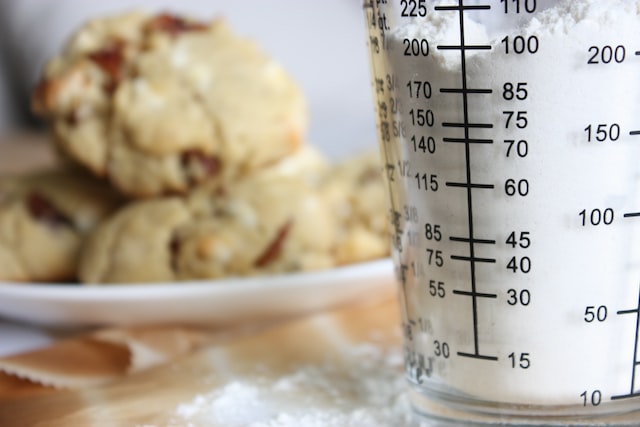Depending on the type of flour used, 500 grammes of all-purpose flour is equivalent to around 4 cups. There are approximately 125 grammes in one cup of flour, thus you can convert grammes to cups by dividing the quantity of grammes by 125. However, because grammes measure weight and cups measure volume, different substances have variable conversion rates between the two units. Due to weight discrepancies, even other varieties of flour, such as whole wheat or rye, may convert at different rates.
Particularly when it comes to flour, measuring while baking is not always as simple as it sounds. These suggestions will guarantee that you use just the proper amount of flour in the kitchen, neither more nor less.
Contents
Cup Measuring of Flour
While it may not seem important to have the correct amount of flour in a recipe, getting it wrong can ruin even the best dishes. Too much flour can result in cookies that are heavy and crumbly as opposed to soft and chewy, as well as dense bread.
Despite the importance of measuring flour, many cooks continue to make mistakes. This is because scooping flour for measurements tends to compact it together densely, resulting in up to 50 percent more flour than necessary. Instead, you should either carefully pour or, better yet, lightly spoon in the flour. In any case, you should fill the cup beyond the desired level before levelling it with the back of a knife or another instrument. You may need to do this a second time, and you should avoid shaking or patting the cup, since these actions will compact the flour. Consider carefully stirring the flour to eliminate lumps and ensuring that there is not more flour in the cup than the recipe requires.
Sifting presents its own unique issues. While a cup of flour, sifted indicates that the flour should be measured and then sifted, a sifted cup of flour indicates that the flour should be sifted before it is measured. Sifting can introduce more air into the flour, therefore a cup of flour that has been sifted likely contains more flour than a cup of flour that has not been sifted.
The Benefits of Weighing Flour to Measure
While it is more traditional in the United States to measure flour by volume (cups), measuring by weight (grammes or other units) is typically more precise, as it makes no difference whether the flour is loose or packed. If you don’t have a scale or are willing to purchase one, it may be more practical to use measuring cups. However, if you have a scale or are willing to purchase one, it is normally preferable.
As a cup of all-purpose flour has 125 grammes (about 4 12 ounces), there are also convenient approximations for other types of flour. One cup is equivalent to approximately 115 grammes or 4 ounces of sifted all-purpose flour, 130 grammes or 4 12 ounces of bread flour, 121 grammes or 4 14 ounces of sifting bread flour, 115 grammes or 4 ounces of cake flour, or 100 grammes or 3 12 ounces of sifted cake flour.
Dry vs. Liquid Measurement
You may believe that all measuring cups may be used equally well for dry and liquid ingredients, however this is not the case. A liquid measuring cup leaves a small space between the top of the cup and the final measurement to prevent spills, but a dry measuring cup does not. If you use a dry measuring cup for a liquid and fill it to the final measurement, some of the liquid will likely spill over the side, whereas if you use a liquid measuring cup for something like flour, you won’t be able to pour in a heaping amount of flour and skim off the top with a knife to obtain a precise measurement. It may appear foolish, but having one of each is crucial to avoid messes and excessive flour usage.
The Daily Buzz combines the pursuit of interesting and intriguing facts with the innate human desire to rank and list things. From stereotypical cat pictures to crazy facts about the universe, every thing is designed to help you kill time in the most efficient manner, all while giving you something to either laugh at or think about!
